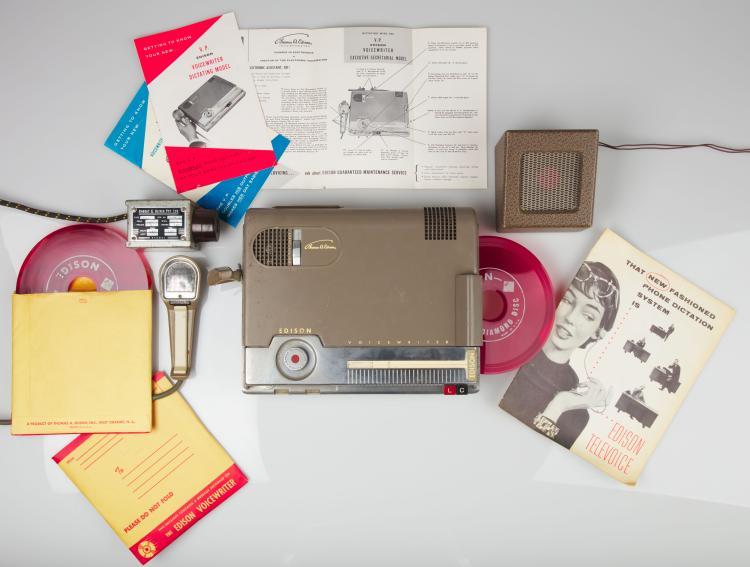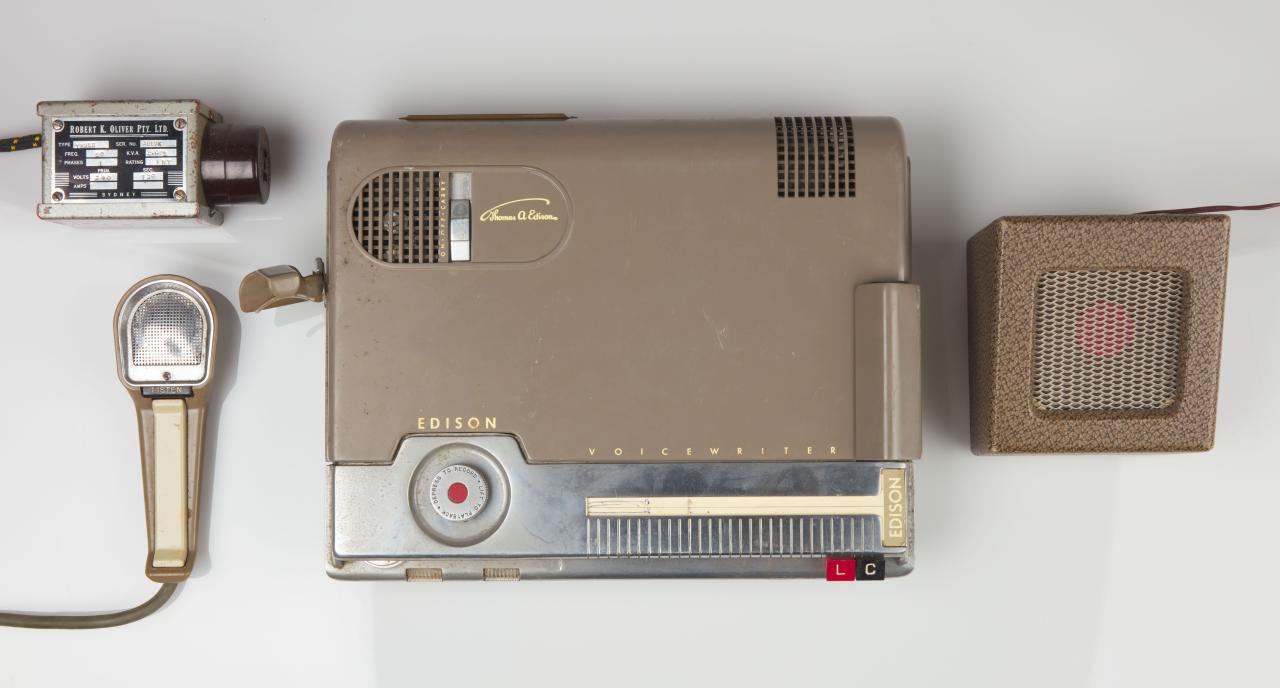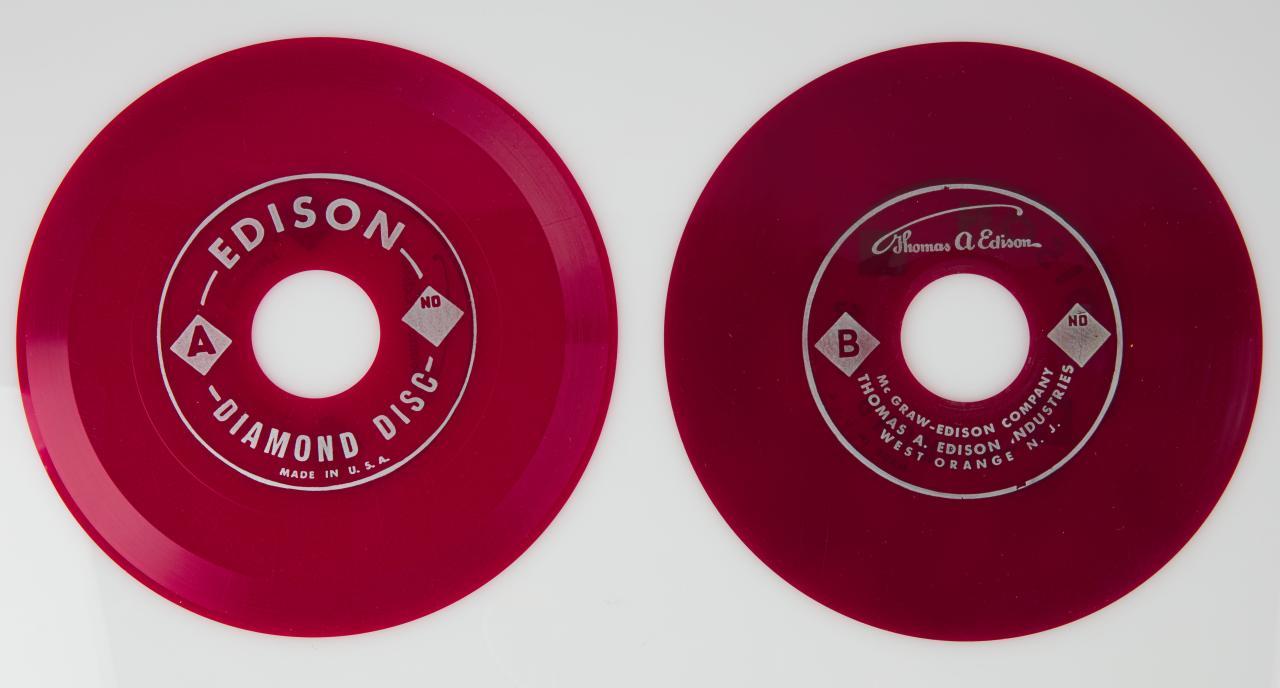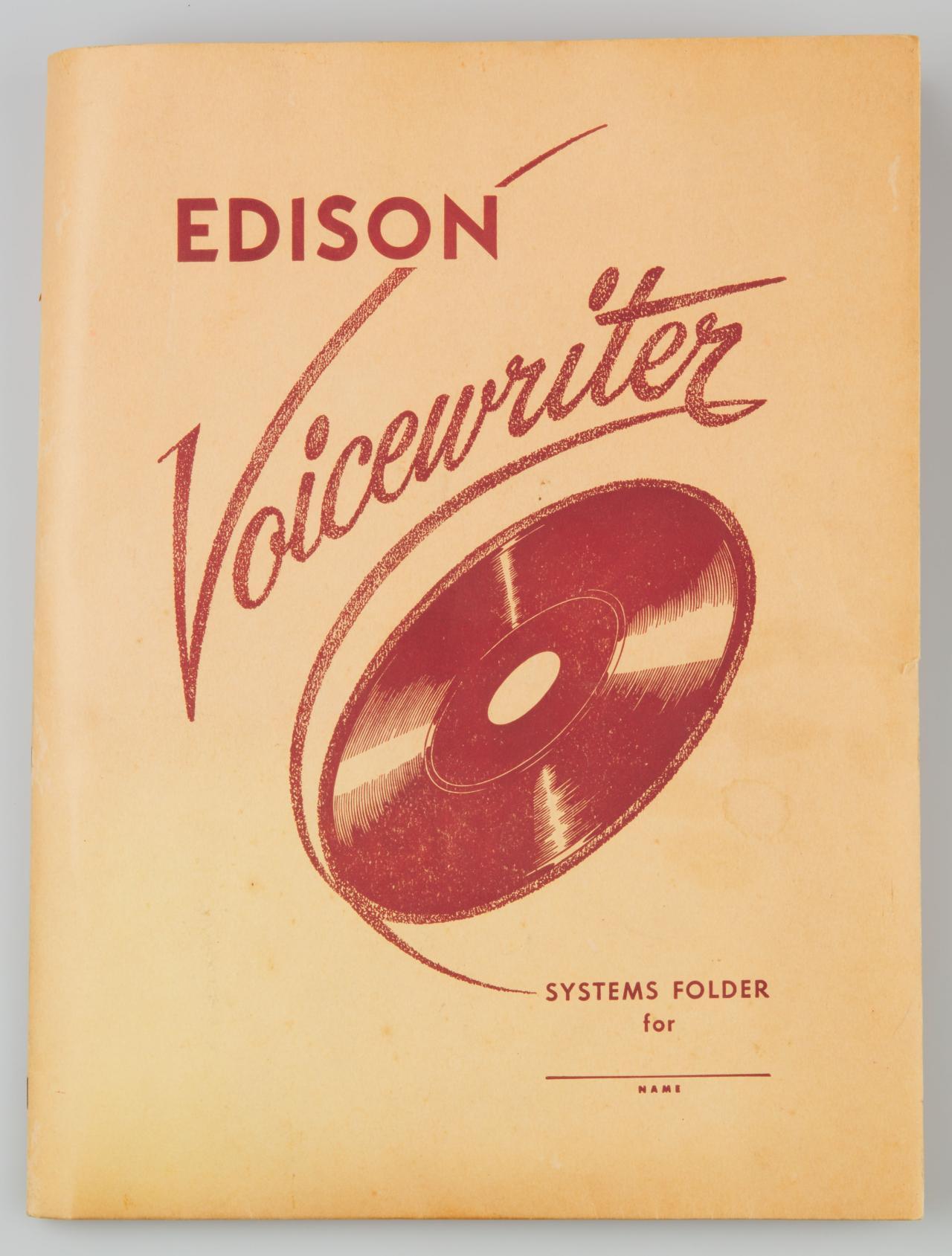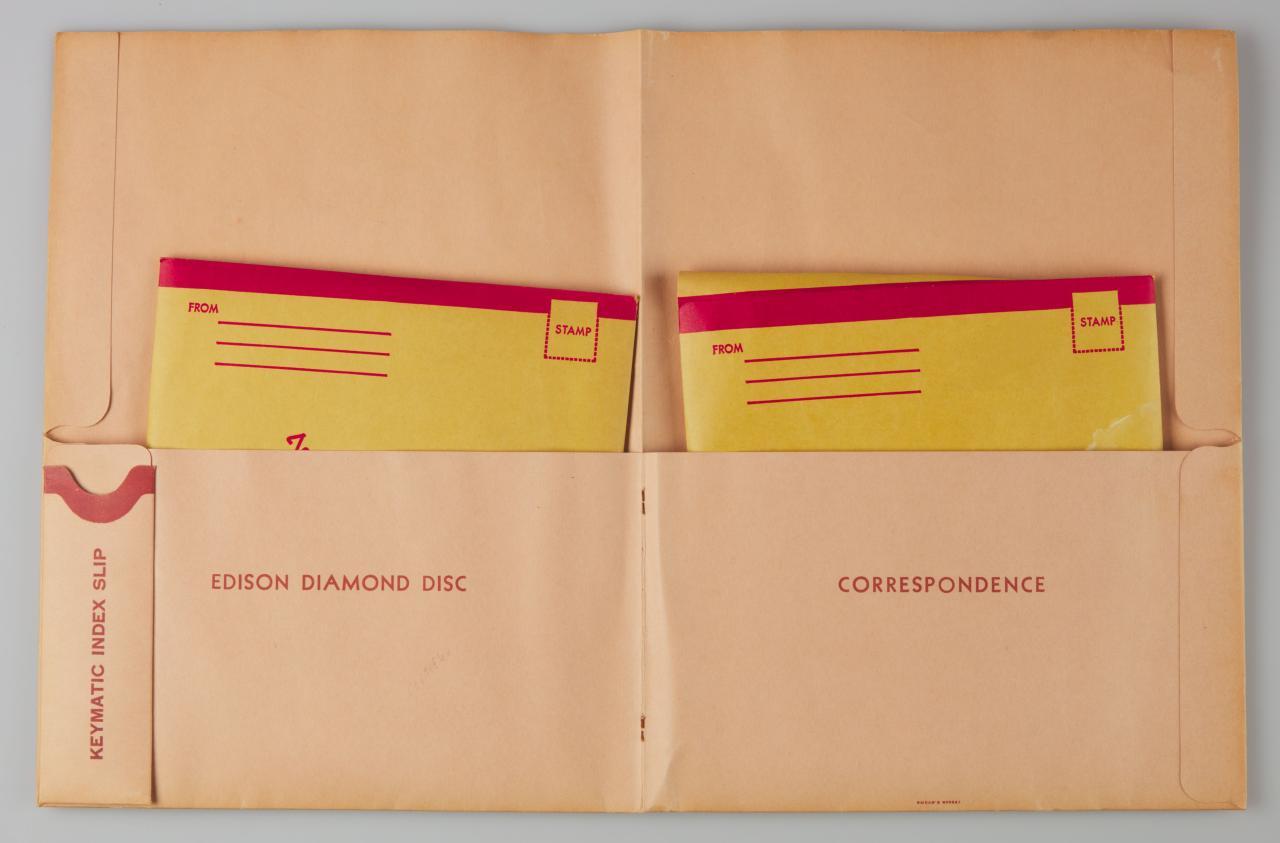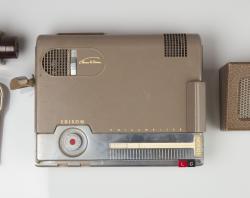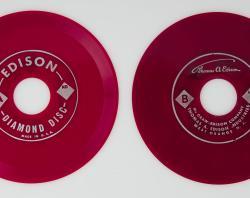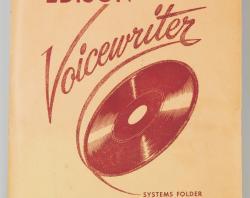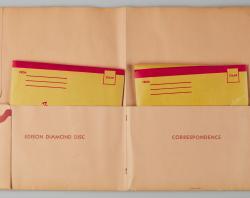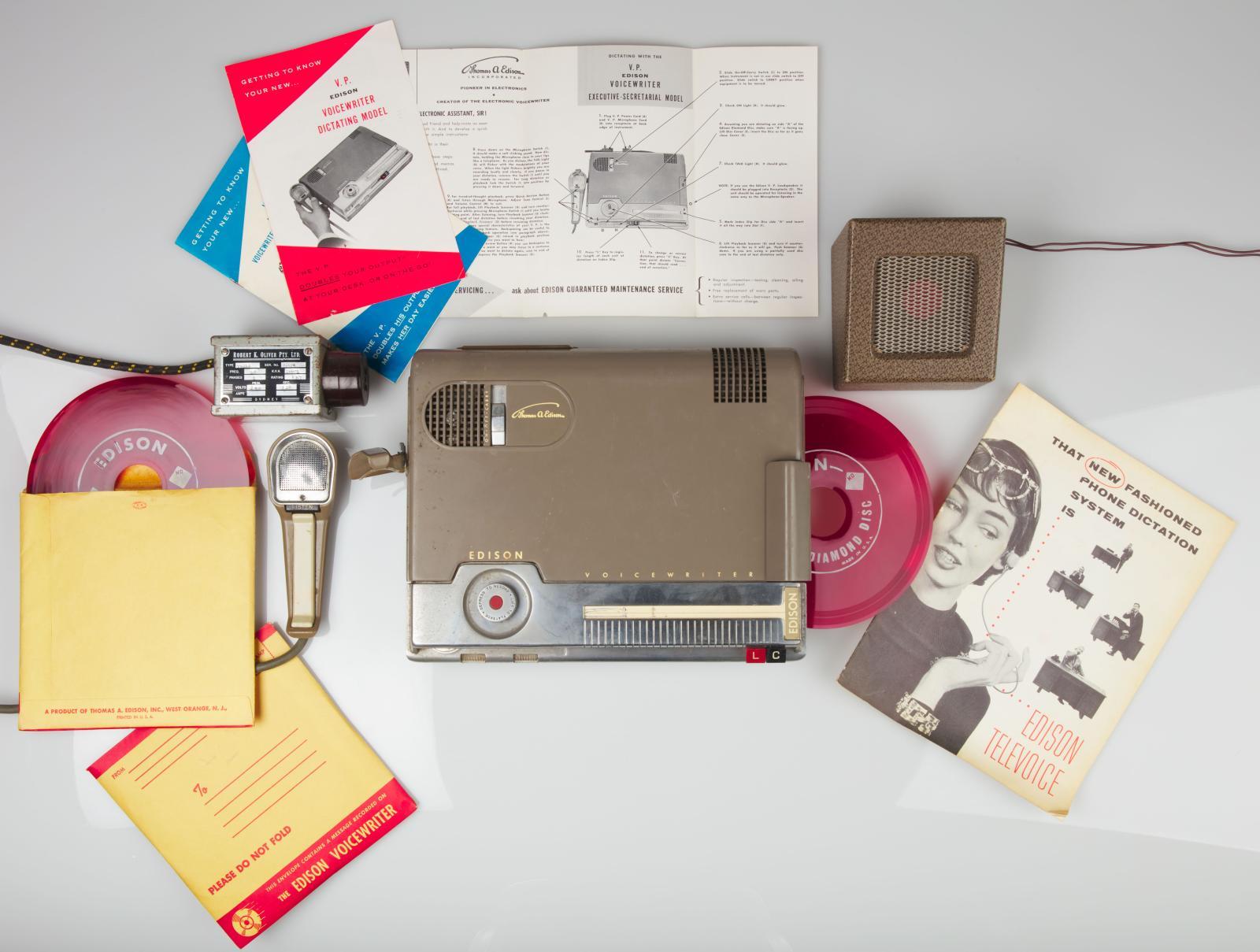
Spinning back time: the Edison Voicewriter and its Diamond Discs
The machine uses a special vertical mechanism to emboss sound onto the provided ‘Diamond Discs’. This method is at odds with the phonographic standard of cutting horizontal grooves, but it also happens to be the recording technique described by inventor of the phonograph, Thomas A Edison, in his original 1877 patent.
We’ve yet to determine if our Voicewriter unit is safe to operate, but luckily the recorded discs play on any consumer turntable. There are caveats, however: a quality modern stylus may struggle to track the less-than-perfect embossed grooves, and the Voicewriter’s rotational speed is about 22rpm, so the sound is ‘sped up’ when played on a 33/13 rpm turntable.
We have digitally ‘slowed down’ some Diamond Discs that document a worldwide business trip. The thin, lightweight discs were stuffed into Edison-branded envelopes and mailed from the 1st Class deck of the SS Stratheden back home to Adelaide.
This illustrates a distinct advantage over the wax cylinders used in Edison’s earlier Ediphone dictation machine. Diamond Discs are also smaller, more durable, and sound better than cylinders, making the Voicewriter a key stage in the evolution of voice recording technology.
And although susceptible to dings and creases, the discs cannot be erased - perhaps this is why the Voicewriter remained popular in business settings even after the next seismic shift in sound recording technology: magnetic tape.
These Diamond Discs are part of a larger yet-to-be-catalogued Harold Anderton Lightburn collection (SLSA: ACC 2364) is currently unavailable due to a temporary pause in offsite collection access, we look forward to sharing this fascinating material in the future.
Written by the Digitisation and Digital Preservation Team
Explore more
Deadline 2025 | National Film and Sound Archive of Australia
Voices captured in wax: digitising wax cylinder recordings from 1901
Catalogue record of Harold Anderton Lightburn (SLSA: ACC 2364)
